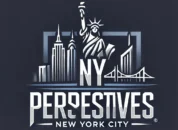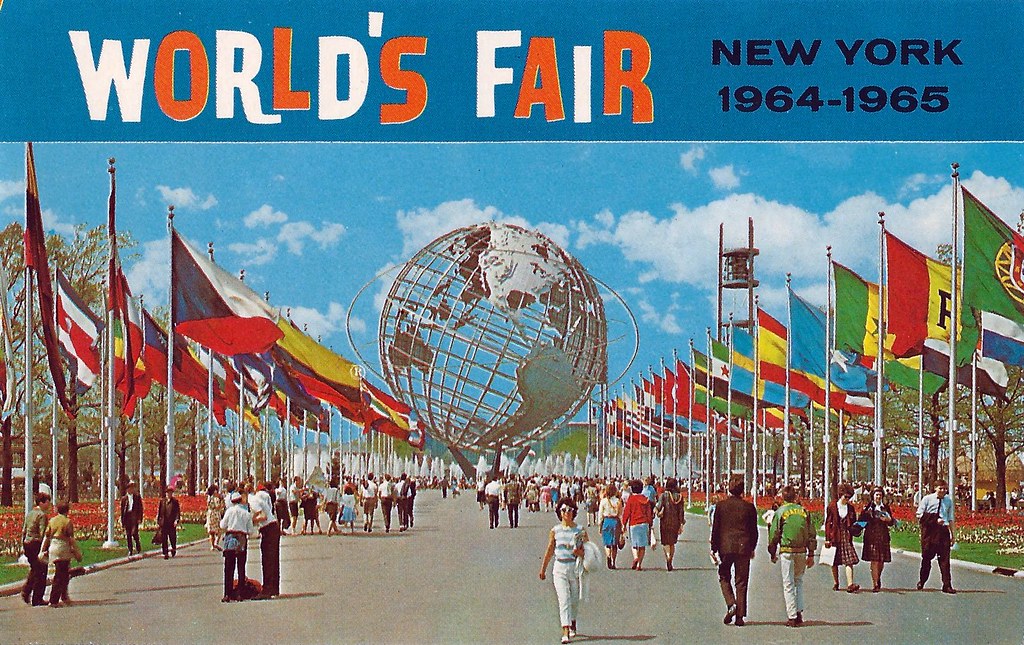Here’s a clear, quick overview of the 1964–1965 New York World’s Fair:
Overview
Location: Flushing Meadows–Corona Park, Queens, New York
Years: 1964–1965 (ran for two seasons)
Theme: “Peace Through Understanding”
Symbol: The Unisphere — a giant stainless-steel globe that still stands today.
What Made It Special
It showcased a future-focused, optimistic vision during the Space Age.
Over 140 pavilions from countries, US states, and major corporations.
Walt Disney played a major role in developing groundbreaking attractions.
Iconic Attractions
Disney Innovations (later moved to Disneyland)
It’s a Small World
Great Moments with Mr. Lincoln
Carousel of Progress
Ford Magic Skyway (with animatronic dinosaurs)
Corporate + Government
General Motors’ “Futurama II” — a ride through imagined future cities.
NASA exhibits showcasing the Apollo program.
The Belgian Pavilion introduced many Americans to the Belgian waffle.
International Pavilions
Many countries built elaborate displays, though some major nations (like the Soviet Union) did not participate.
The Vatican Pavilion displayed Michelangelo’s Pietà, shipped from Rome under tight security.
Technology & Culture
Early computer displays and push-button technology.
Picturephone prototypes from Bell.
Emphasis on space exploration, cars, highways, and suburban life.
Over 50 million visitors attended across two seasons.
Controversies
Not officially sanctioned by the Bureau of International Expositions (BIE).
High costs led some countries to skip participation.
Financial issues meant the fair didn’t break even.
**************
1. What Remains Today (and What’s Abandoned)
New York State Pavilion
- Originally made with plastic panels.
Observation Towers (“Astro-View” towers) — three tall circular towers that hover above.
Theaterama — which is still in use today — is now the Queens Theatre in the Park.
The most iconic “ruin” from the fair, designed by Philip Johnson.
It has three main parts:
Tent of Tomorrow — a large, open-air “circus tent”–style roof
However, much of the rest (especially the Tent and towers) remains largely unused or “abandoned.”
The terrazzo floor in the Tent (which is a map of New York State) has deteriorated, though preservationists have repainted parts.
There’s been an effort to restore the pavilion. Vanity Fair
Unisphere
The giant stainless-steel globe (140 feet tall) is still there.
It was restored in the late 1980s, with structural work to fix loose rivets, cables, etc.
It’s one of the most visible remnants and now a landmark.
New York City Pavilion
This housed the Queens Museum (today), and inside is still the Panorama of the City of New York, a huge-scale model made for the fair.
The building itself is not totally abandoned — it’s still in use (museum) — but parts of its fair-era identity linger.
Hall of Science
This is another living remnant: it was part of the fair and remains as a science museum.
Houses some fair-era artifacts, including rockets from the fair’s “Space Park.”
Lower Structures / Lost Remains
The U.S. Post Office Pavilion became a roller rink at one point, then a warehouse.
Many other pavilions were demolished after the fair. For example, the United States Pavilion was torn down in 1977.
According to archaeological surveys, some fair-era foundations and structures were buried (demolished down to several feet under ground, then covered).
There was also a “Garden of Meditation” marked by a plaque.
2. Historical Context & Significance
The 1964–65 World’s Fair was held in Flushing Meadows–Corona Park in Queens.
It was very “Space Age” in its design: futuristic architecture, bold concrete, modern materials, and ambitious pavilions.
After the fair ended, the site became a public park (in 1967).
Many of the structures were not intended to be permanent — after the fair, some were demolished or repurposed, others just left to decay.
There was a major push in later decades to preserve some of the most architecturally significant structures (like the Pavilion).
3. Present Status & Restoration
The New York State Pavilion is partially abandoned, but preservationists have long pushed to restore it.
The Large Tent roof has deteriorated; some panels are gone, and the terrazzo floor map is in disrepair.
The Observation Towers are closed to the public.
The Unisphere is maintained and cleaned (it’s a landmark).
The Queens Theatre (in Theaterama) is active and used for performances.
According to the Historic Districts Council, the Pavilion and the World’s Fair Carousel are listed on the State and National Register of Historic Places.
There are also mosaics from the fair that are in danger: some are being removed due to erosion and safety issues.
4. Why It’s So Fascinating
The “ruin aesthetic” of the State Pavilion is very powerful — it’s a mix of utopian optimism (futurist architecture) and decay that resonates with many people interested in retro-futurism.
Its design is very 1960s: ambitious, hopeful, experimental.
Because it’s partially abandoned yet so iconic, it’s a symbol of what the fair promised (a “world of tomorrow”) and what actually happened: not everything lasted, but some pieces still whisper that past.
It’s also culturally relevant: the site has appeared in films, music videos, etc. (for example, observation towers often show up in pop culture)




